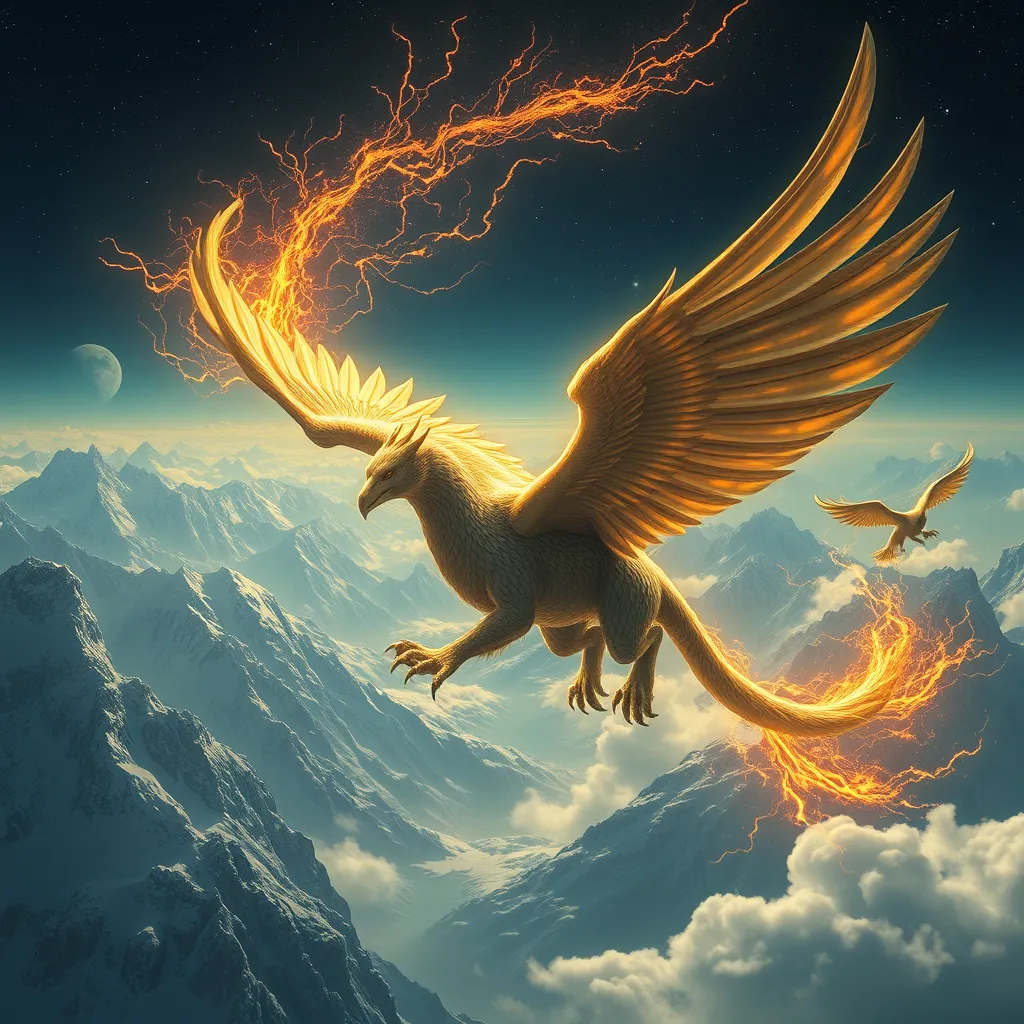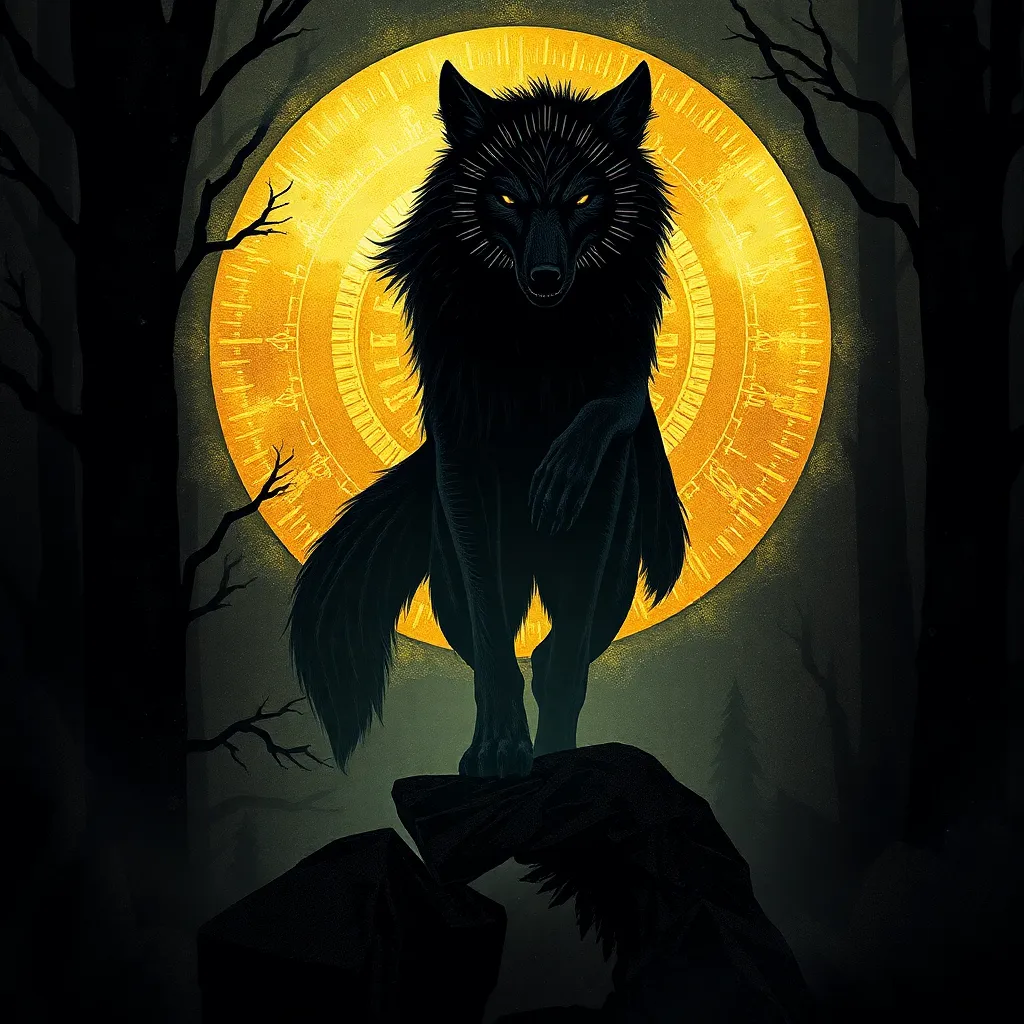The Griffin’s Flight: From Hyperborea to the Arimaspians
I. Introduction to the Griffin Mythology
The Griffin, a creature with the body of a lion and the head and wings of an eagle, is one of the most significant mythological beings in ancient cultures. This hybrid creature symbolizes the union of strength and wisdom, embodying the majestic qualities of both the terrestrial lion and the celestial eagle. Its significance extends across various civilizations, from the ancient Egyptians to the Greeks, highlighting its role as a protector and a symbol of divine power.
This article explores the mythical journey of the Griffin from Hyperborea, a land of eternal spring and peace, to the realm of the Arimaspians, a tribe known for their conflicts with the Griffin. This journey not only showcases the creature’s importance within these cultures but also reflects broader themes of power, protection, and the exploration of the unknown.
II. The Origins of the Griffin in Hyperborea
Hyperborea, often described in ancient texts as a utopian land situated far to the north of Thrace, is characterized by its perpetual sunlight and idyllic conditions. According to mythology, it was inhabited by the Hyperboreans, a blissful people who lived free from war and disease. The Griffin’s presence in Hyperborea is deeply intertwined with the region’s identity.
- Description of Hyperborea: A land of eternal spring, where the sun shines twenty-four hours a day.
- The role of the Griffin: The Griffin was seen as a guardian of the Hyperborean treasures, often depicted as a protector of the sacred gold that flowed from the mountains.
- Symbolism: In Hyperborean lore, the Griffin symbolizes not only power but also a divine connection, representing the harmonious balance between earthly and celestial realms.
III. The Griffin’s Connection to the Arimaspians
The Arimaspians, a tribe mentioned in ancient Greek writings, were depicted as fierce warriors who resided in the northern regions. They were known for their one-eyed appearance and their relentless pursuit of gold, which they believed to be guarded by the Griffin. This relationship between the Griffin and the Arimaspians is rich with conflict and interaction.
- Introduction to the Arimaspians: A mythical tribe often described as having a singular eye, representing a unique perspective on the world.
- The relationship: The Arimaspians and the Griffin were locked in a perpetual struggle, with the Arimaspians seeking the treasures that the Griffin guarded fiercely.
- Myths of interaction: Stories abound of battles between the Arimaspians and the Griffin, illustrating themes of greed, valor, and the consequences of desire.
IV. The Griffin as a Symbol of Power and Protection
Throughout ancient art and literature, the Griffin has been portrayed as a powerful figure. Its representation serves as a testament to the values held by both the Hyperboreans and the Arimaspians.
- Representation in art: Ancient artifacts often depict the Griffin in various forms—from pottery to sculptures—highlighting its revered status.
- Significance in warfare: The Griffin was considered a formidable guardian, often associated with warriors who sought its blessing before battle.
- Embodiment of values: The Griffin encapsulates the ideals of bravery, nobility, and the protection of sacred treasures, resonating with both cultures.
V. The Journey of the Griffin: Mythological Interpretations
The flight of the Griffin between Hyperborea and Arimaspia can be interpreted as a metaphor for exploration and discovery. This journey carries profound implications for cultural exchanges and interactions between different civilizations.
- Metaphor for exploration: The Griffin’s flight symbolizes the quest for knowledge and the human spirit’s desire to discover the unknown.
- Cultural exchanges: The interactions prompted by the Griffin’s journey led to the sharing of ideas, artistic expressions, and beliefs between cultures.
- Variations in myth: Different ancient texts recount unique versions of the Griffin’s journey, demonstrating the diverse interpretations across cultures.
VI. Modern Interpretations and Representations of the Griffin
In contemporary literature, art, and popular culture, the Griffin continues to captivate audiences. Its portrayal has evolved, reflecting modern perspectives on ancient myths.
- Contemporary representations: The Griffin appears in modern fantasy literature, films, and artworks, often symbolizing adventure and mystery.
- Reshaping understanding: Today’s interpretations encourage a reevaluation of ancient myths, connecting them to modern themes of identity and belonging.
- Relevance today: The Griffin’s story serves as a reminder of the timeless human fascination with mythical creatures and the narratives that shape our understanding of the world.
VII. Comparative Analysis: The Griffin and Other Mythical Creatures
When examining the Griffin alongside other mythical beings, such as the Chimera and the Sphinx, we can identify both similarities and differences that highlight its unique place in mythology.
- Similarities: Like the Chimera and Sphinx, the Griffin is a hybrid creature, embodying traits from two distinct animals.
- Differences: Unlike the Chimera, often depicted as a chaotic creature, the Griffin embodies order and protection.
- Cultural significance: These comparisons enrich our understanding of ancient beliefs, illustrating how societies used hybrid creatures to convey complex ideas about nature and divinity.
VIII. Conclusion: The Enduring Legacy of the Griffin’s Flight
In summary, the Griffin’s journey from Hyperborea to Arimaspia encapsulates themes of power, protection, and the quest for knowledge. This mythical creature, with its rich symbolism and cultural significance, has left an indelible mark on the tapestry of mythology.
The enduring legacy of the Griffin serves as a testament to the human fascination with the extraordinary and the narratives that arise from our collective imagination. As we continue to explore and study these myths, we preserve a vital part of our cultural heritage that resonates across time and space.



